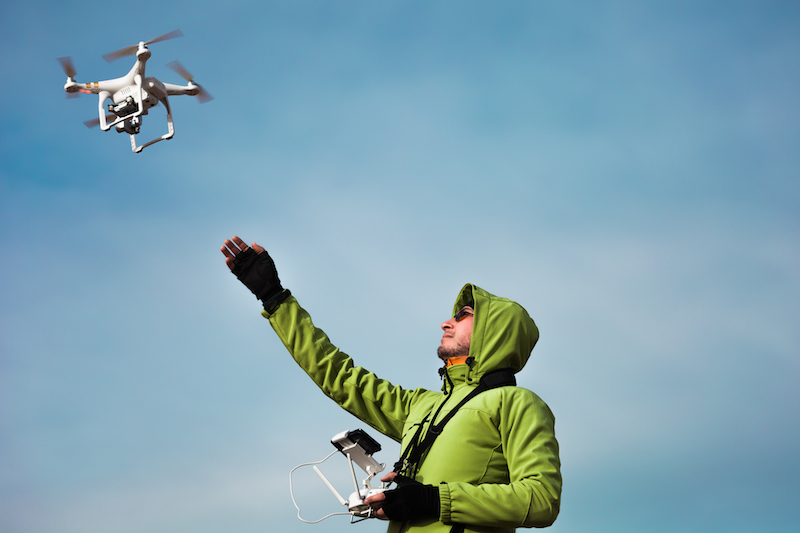Landing on an aircraft carrier
Not a week goes by without some news on a drone “misconduct” (latest was landing on one of UK’s aircraft carrier). They gather about as much interest as they spark fear. Try flying a drone, just about anywhere, and before you’re first battery is up, you’ll have a small crowd around you. And yes, you’ll have to answer the questions while concentrating on reverse flying.
After you’ve gone, you can bet conversations will go from “how cool was that?” to “what ifs…”. What if you use it to spy on people, what if you attach a weapon on it, what if you stick a lethal disease on it and fly it into crowds?
The legal discrepancies
This dilemma, which never occured with such things as cars, springs heaps of laws everywhere. Because drone makers have no interest in seeing their machines grounded, they try to adapt to various legislations. That the nightmare part.
Recent law update in Canada has limited the flying altitude of a UAV (umanned aerial vehicle) to a mere 90m. It’s 120m in the USA as it is in the UK. France has a higher limit at 150m above ground level (yep, even above the Mont Blanc). All agree the operator must keep the UAV within sight and avoid airports.
Drone manufacturers such as DJI spare no effort in trying to please the law-makers but one must admit this is quite a challenge. And so it is for the pilot.
Trying to fly in France
Say you’re in France, on your favorite vacation spot, and you want to fly your Phantom (DJI middle-range drone). We’re talking flying for fun. No commercial use. Then you should look up Geoportail, a website that shows precisely the flying restrictions. Great, isn’t it?
Except it’s incomplete. France has these Natura 2000 zones where birds are protected and should not be disturbed during mating times.
It’s not clear whether it’s “forbidden” to fly there or “not recommended” which, from a legal standpoint makes a world of difference. These zones don’t show up on geoportail anyway so you need to go to another website to check it out and worry about their mating calendar.
You also have “Special Protection Zones” for the other animals and vegetals. As it turns out, you shouldn’t fly near an heliport which is sensible enough. These things hang around hospitals a lot. But they don’t show up of the map either so you need to find where the nearest hospital is to get a heavy dose of Xanax make sure you’re not endangering anyone.
Accessories vs. laws
After you’re done checking all this, it’s usually night-time and you’re not allowed to fly if you can’t see your aircraft. Then again, you could buy those sweet DJI goggles for immersive First Person View flying… provided you have another person nearby to keep looking at the drone while you’re having your fun. Actually, no. The person looking at the drone should be able to operate it in case anything happens. So you have to fly and look and let the other person get all the FPV fun. Forget the goggles.
To top it off, if you take the picture of the year and want to sell it, that’s too bad. You must get a licence for aerial work, one of the 4 types of licences depending on what you plan to fly over.
Updating the law
France has prepared an update to the current law but simplification is not the main goal. It’s basically making leisure flight more complicated and concentrates on the business side. All drones weighing more than 800g will now required registration. And the ones weighing more will need special “light and sound” add-ons. But this is for France only. A country where counter-terrorism initiatives include eagles trained to take down drones.
In the meantime, the US have decided to drop DJI for their UAV work and most believe it’s for fear of hacking. DJI has therefore added a Stealth Mode. This mode will be entirely disconnected from the internet thus minimizing the risk of hacking. And minimizing the chance of noticing suspicious activity. Much to France’s horror. DJI is considering making the update selectively available depending on the country’s laws. This is the part where you’re very happy not to be working for DJI’s legal department.
The future of flying
Flying a drone, even for fun (and it is a lot of fun!) is becoming overly complicated! No one is absolutely sure they abide by the law even if they want to. Two paths start from there: putting away the drone or turning your back on the law. None are satisfactory even if law makers have a clear preference for the first one.
The future of UAVs is dark for leisure pilots. The concerns for public safety are valid, the ways to achieve this safety are debatable. Let’s hope a sensible approach by law-makers can help drone-manufacturers, users and professionals find a way to thrive in this young and thrilling activity.
Did you like it? 4.4/5 (28)








